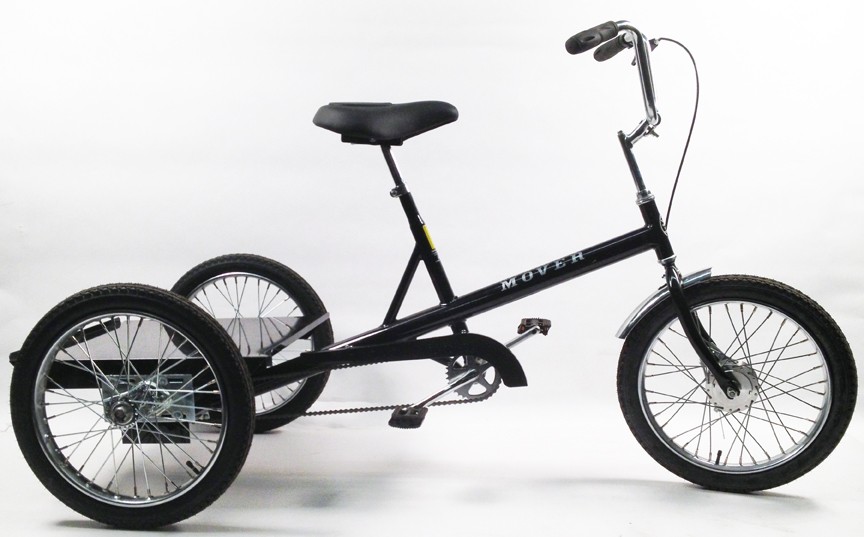Winter Care for Cargo Bikes: A Practical Plan That Actually Works
 Cold weather doesn’t just test riders; it tests what they ride. For cargo bike owners, that means contending with snow, slush, and salt that attack metal and wiring year-round. By mid-winter, you can see the signs: rust creeping up bolts, squeaky brakes, chains turning orange, and e-bike batteries that suddenly feel weak.
Cold weather doesn’t just test riders; it tests what they ride. For cargo bike owners, that means contending with snow, slush, and salt that attack metal and wiring year-round. By mid-winter, you can see the signs: rust creeping up bolts, squeaky brakes, chains turning orange, and e-bike batteries that suddenly feel weak.
Still, winter doesn’t have to ruin your investment. With a consistent, realistic routine, you can ride through storms, store outside, and keep your cargo or e-bike ready to roll the minute spring arrives. The goal isn’t perfection; it’s prevention. Clean off salt, protect moving parts, and keep your battery warm and half-charged. That’s the formula for getting through winter without a surprise repair bill in April.
Background: Why Cold Winters Are So Hard on Cargo Bikes
Winter corrosion is aggressive because road maintenance systems use chemicals that work against your hardware. The Federal Highway Administration explains that chloride-based road salts bond with moisture in the air and accelerate rust wherever oxygen can reach bare metal. It’s not just the roads; salt spray and meltwater coat sidewalks, driveways, and garages.
- How salt accelerates wear: Road deicers cling to moisture and metal, drawing water into bolts, chain links, and threads where oxidation begins almost immediately.
- This is why rust appears even if you haven’t ridden for several days.
- Corrosion happens faster on bikes than on cars because protective coatings wear away through friction and exposure.
- Cold weather’s double hit: Studies from the National Renewable Energy Laboratory (NREL) show that cold impairs lithium-ion batteries by slowing chemical reactions and increasing resistance.
- Below 32°F, an e-bike battery can temporarily lose up to 40% of its range.
- Charging it cold can cause permanent cell damage, shortening its lifespan.
- Maintenance equals safety: According to multiple state transportation departments, low temperatures and reduced visibility increase braking distances and the risk of accidents. A clean drivetrain and working brakes aren’t cosmetic; they’re safety equipment.
These realities make one truth clear: winter maintenance isn’t optional. It’s protection for both your bike and your safety.
The Salt Rule: Remove, Dry, Protect
Every winter bike that survives in good shape has one thing in common: routine cleaning. Salt never stops working once it’s on metal, and the longer it sits, the more damage it causes. Think of this step as your weekly defense against corrosion.
- Quick Post-Ride Wipe (5 minutes or less): Even on freezing days, a short wipe-down beats a deep cleaning once a month.
- Focus on high-exposure zones: rims, brake pads or rotors, chain, derailleur, kickstand, and bolts near the lower frame.
- Use a damp rag or low-pressure spray to lift off grime and salt; the Federal Highway Administration confirms that salt is water-soluble and rinses easily.
- Always dry completely with a towel or rag before storage. Trapped moisture speeds up rusting more than salt alone.
- Lubricate to Seal and Shield: Lubrication isn’t just about smooth pedaling; it’s a barrier that blocks oxygen and salt from attacking bare metal.
- Apply lubricant to the chain, cables, and pivot points after each cleaning.
- Move each joint a few times to draw the lube inside, then wipe away any residue to prevent grit buildup.
- Lightly mist bolts and springs with a rust inhibitor or silicone protectant for added defense.
- Weekly Inspection: Salt damage doesn’t announce itself until it’s too late. A two-minute inspection saves parts.
- Check spoke nipples, valve stems, and brake mounts for rust specks.
- Spin the wheels—listen for grinding, rubbing, or squeals.
- Tighten bolts that feel loose; freeze–thaw cycles can slowly back them out.
You don’t have to be meticulous; just consistent. That five-minute ritual can extend your bike’s lifespan by years.
Storage That Works in Cold Climates
Not everyone has a garage or heated storage, and that’s fine. The goal is to adapt your setup to whatever space you actually have—keeping things dry, stable, and ventilated.
- Indoor storage (best-case scenario): A dry, temperate space protects both mechanical and electrical parts.
- Choose a cool area like a hallway or basement that doesn’t freeze.
- Keep tires inflated to their recommended PSI or about 80% of maximum to prevent flat spots.
- Use a stand or wall hook to elevate the bike, allowing airflow underneath.
- Rotate wheels occasionally to keep bearings free.
- Outdoor storage (when space is limited): When outdoor parking is your only option, focus on airflow and protection.
- Use a breathable, weather-resistant cover that vents humidity. Solid tarps trap condensation that accelerates rust.
- Anchor the cover securely to prevent wind abrasion that can scratch paint or coatings.
- Elevate the bike slightly to avoid sitting in meltwater.
- Combine covering with a quick wipe-down after storms; this offsets the effects of moisture that sneaks in.
Security and accessibility
- Remove your battery for long-term storage.
- Use a U-lock or heavy-duty chain secured to a fixed object.
- Choose a visible, well-lit location. Visibility deters theft and makes maintenance easier.
Storage success in winter is about access. The easier it is to reach your bike, the more likely you’ll stay consistent with care.
The Real Payoff
- Daily: Quick wipe, dry, and lube.
- Weekly: Rust and brake check; confirm tire pressure.
- Monthly: Deeper clean and reapplication of protectant.
- Battery: Keep indoors, mid-charge, and never charge when cold.
This framework aligns with guidance from federal safety agencies and transportation authorities across the U.S. It works because it focuses on simple, repeatable habits that build resilience against the elements.
You don’t need a garage, a workshop, or fancy tools—just the discipline of steady care.
Riders who depend on cargo bikes know they’re not toys; they’re tools that work hard year-round. Taking five minutes after a ride or ten minutes on the weekend isn’t about fussing; it’s about respecting what carries you through the harshest months.
Keep salt off, keep the battery warm, and keep your storage space dry. When spring returns, your bike will look and feel the same as it did before the first frost. This is a reflection of steady effort and the durable mindset behind every American made bicycle built to last.







